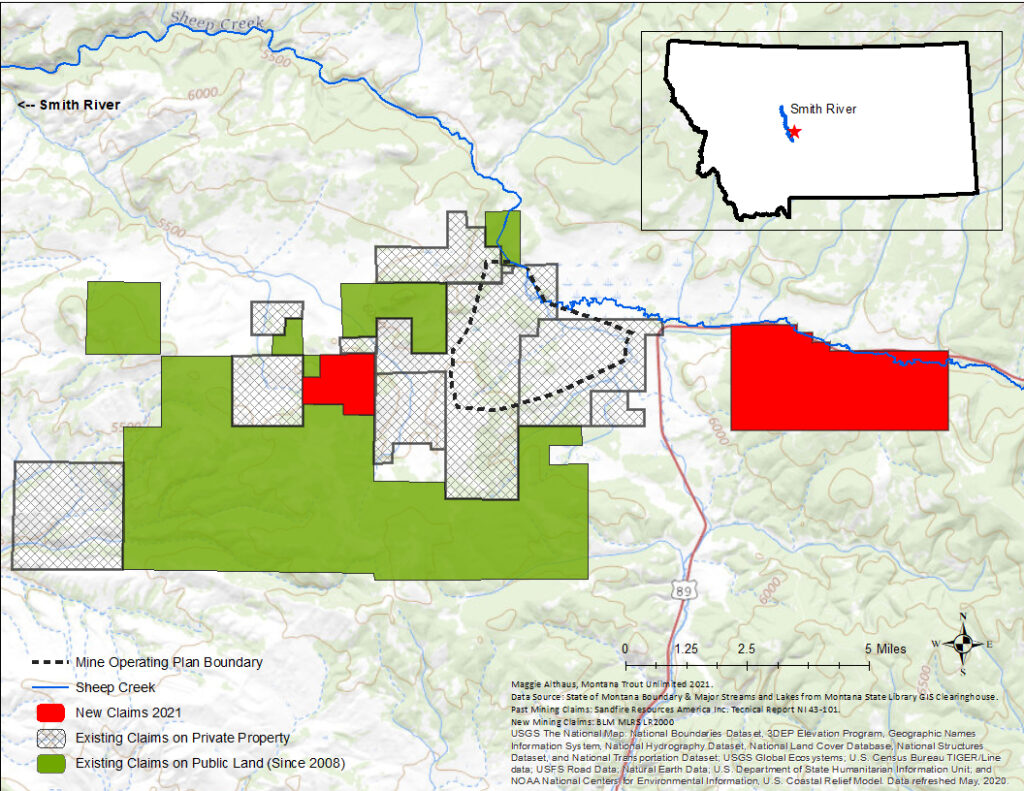
Protect the Smith: No Mining on Public Land
Mineral Withdrawal: What is it and why?

The Smith is special for more reasons than fly fishing for wild trout. Hundreds of Native American cultural sites are hidden in the many canyons and draws surrounding the river corridor, and hunting, camping, hiking, wildlife and other recreational values could be irreparably harmed with future large scale industrial mining.
That’s why we’re asking the United States Forest Service to remove public land in the Smith from future mining development. The Secretary of the Interior has authority to withdraw lands in Federal ownership, effectively removing an area from settlement, sale, location or entry for the purpose of limiting activities to maintain other public values in the area or to reserve it for a particular public purpose or program.
Read and sign our petition below and help protect the Smith for future generations.
Sign the Petition – Add Your Name!
Dear Deputy Chief French & Supervisor Platt –
We, the undersigned residents of Montana and other states hereby urge the U.S. Forest Service (USFS) to proceed with an administrative mineral withdrawal on federal public lands in the Smith River watershed of central Montana.
The Smith River is deeply woven within Montana’s cultural fabric and history. Each year, thousands of Montanans and non-residents apply for a permit to journey through its spectacular 59-mile-long limestone canyon. Floating the Smith is a once-in-a-lifetime adventure, allowing for world-class trout fishing, wildlife viewing, and other unforgettable experiences that enrich our lives and become stories carried on through generations. These lands have been used for millennia by Montana’s first peoples, with some of the best examples of Native American pictographs in Montana.

For decades, Montana Fish, Wildlife & Parks has successfully managed the permitted section of the Smith River for the benefit of Montanans, non-resident visitors, and the fish and wildlife that call the watershed home. This section of river, much of which has been found to be eligible for Wild & Scenic designation by the USFS, flows through a patchwork of private and public lands in one of the most isolated areas of Montana.
Recently, there has been a push for industrial-scale mining on private and public lands in the Smith River drainage. While Montanans understand the necessity of certain mining for modern society, the serious environmental damage that often results from mining means it isn’t appropriate everywhere. Because of the Smith River’s unparalleled natural attributes and cultural importance, mining on public lands within the Smith watershed simply is not appropriate.
Already, more than 500 mining claims have been filed on federal public lands in the Smith River watershed. Many of these claims are along tributaries to the Smith River, and some are within eyesight of the Smith River itself. Recognizing the threat, two Montana Tribes (the Fort Belknap Indian Community and the Confederated Salish and Kootenai Tribes) have already passed resolutions in support of a mineral withdrawal.
These public lands also help to fuel Montana’s $7.1 billion outdoor economy and serve as important grazing lands for Montana ranchers. Economic evaluations have determined that recreation opportunities on the Smith River generate over $11 million annually in economic activity for southwest Montana.
In closing, we want to ensure that the Smith River and the lands that surround it are protected for Montanans, and for all Americans, for generations to come. The only way to achieve that vision is if the USFS proceeds with an administrative mineral withdrawal over the next six months.
Sincerely,